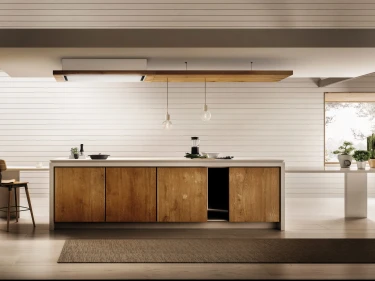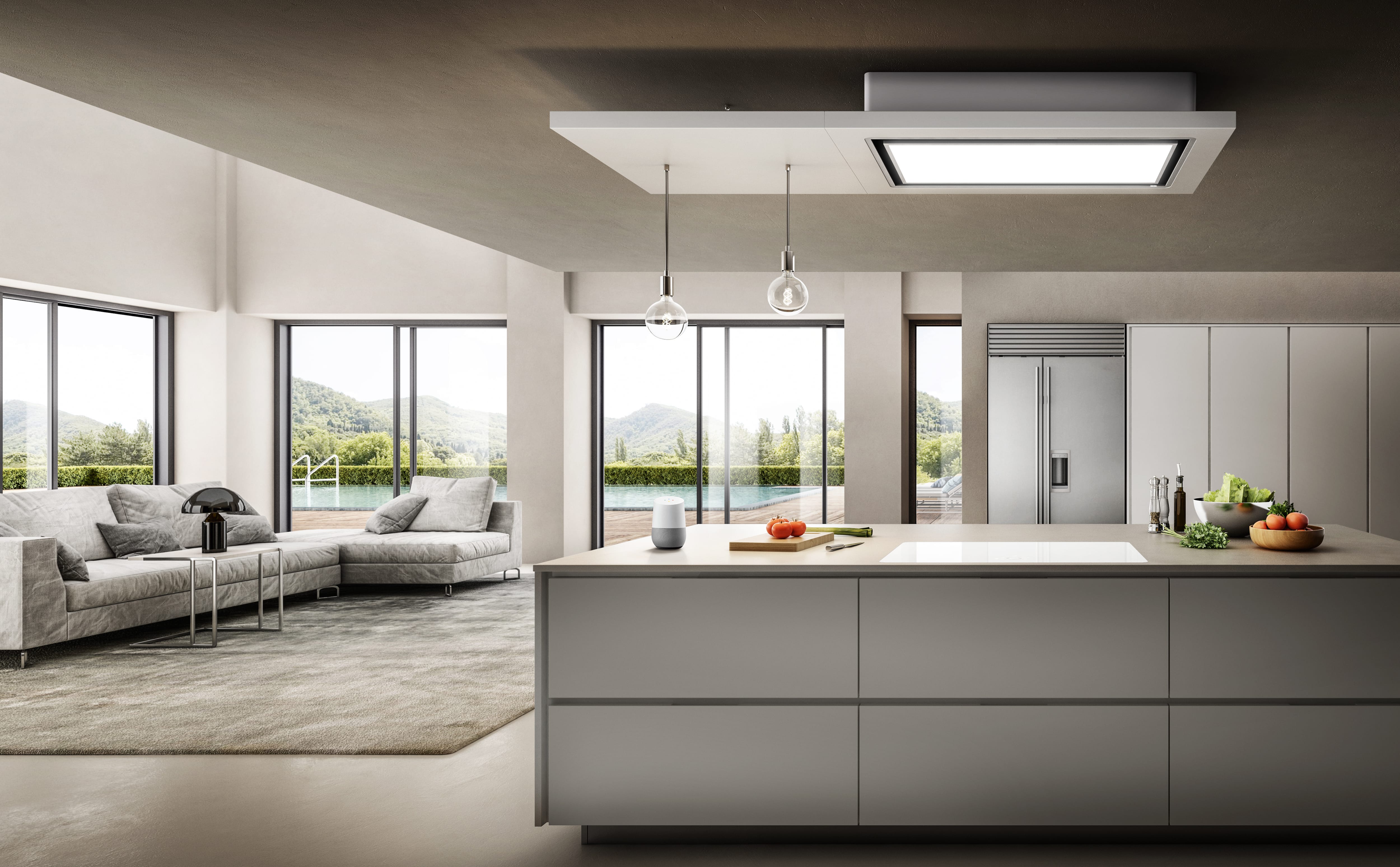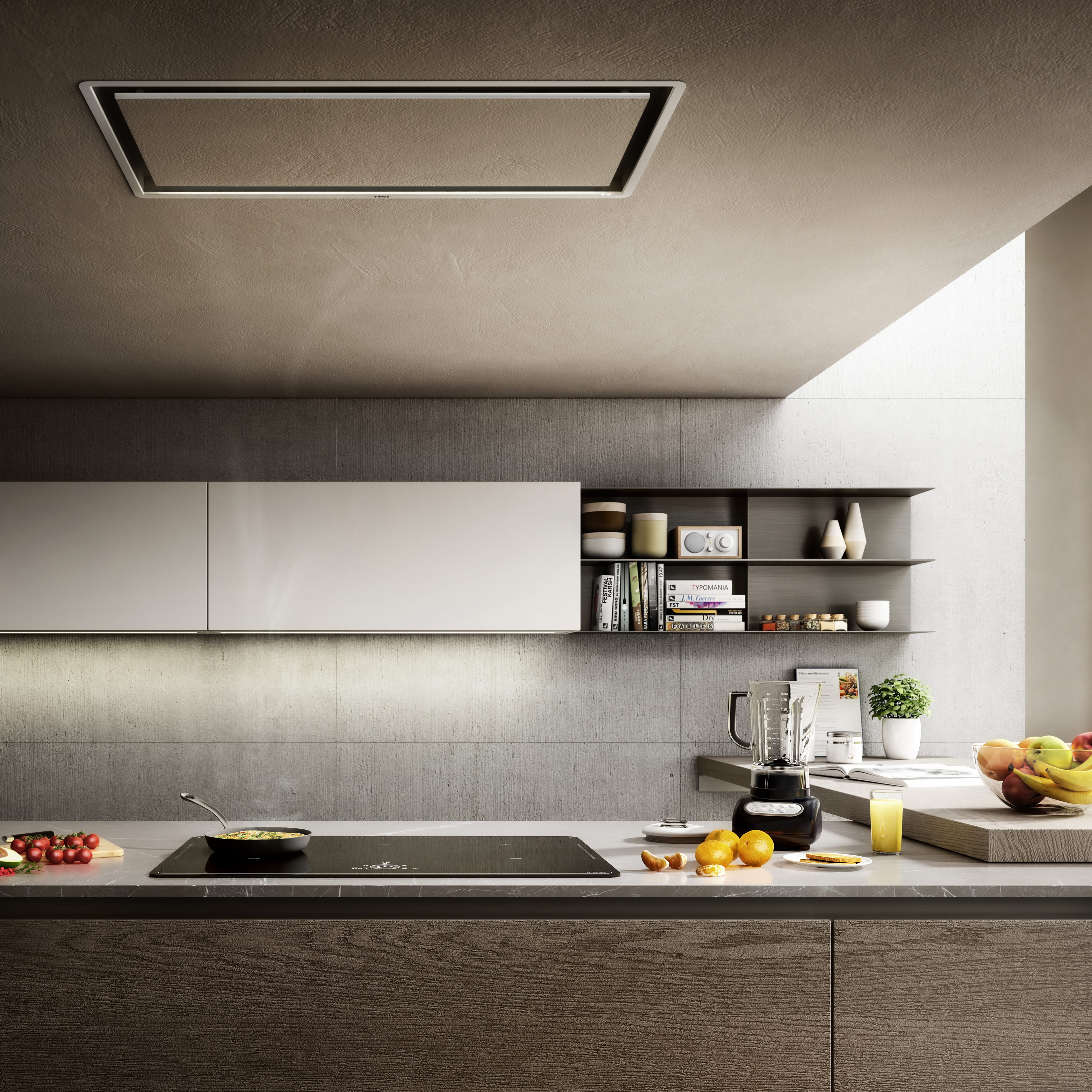
Ceiling hoods with plasterboard structure
Among the various types of kitchen hoods currently available on the market, the ceiling hood is the model that best blends into the kitchen space, combining function with design. When designing a kitchen, the choice of a hood is influenced by many factors, such as the position of the hob, the possibility of installing piping to convey fumes outside, as well as looks and functional needs that give that distinctive touch to the entire room. Ceiling hood technology meets specific technical and aesthetic design needs: Let’s find out how a ceiling hood works and the best solutions available for your kitchen.
Ceiling hood: When should I choose it?
The various hood models available in terms of features, looks and positioning makes choosing one even more difficult, with the risk of selecting a model that may not be the most suitable for your kitchen. The ceiling hood is a particular hood model, where piping, fan and most of the appliance as a whole are built into the ceiling. Its installation generally requires preparation of a false ceiling in plasterboard, or similar materials, in order to provide the necessary space to position the hood. Elica solutions are extremely compact in size, therefore smaller and simpler preparatory works are required.
A ceiling hood is preferable to other kitchen hood models when:
-
you are looking for minimal and elegant design, flowing with the rest of the room and discreet;
-
you don’t want to weigh down a space with an island kitchen;
-
the architectural layout and technical configurations make it possible to install this type of hood to transform an extraction system into a true design piece.
Despite their minimal design, ceiling hoods are equipped with the same technical features as traditional extraction systems, without having to choose between high performance and looks.
Ceiling hoods: how they work and which to choose
Ceiling hoods, just like other types of extraction systems, may be installed in two modes, based on the structure of the kitchen:
-
Duct out mode, where the air, saturated with vapor and cooking condensation, is sucked in by the fan, filtered from greasy substances by the grease filter and removed towards the outside of the home through a specific duct;
-
Filtering mode, where extracted air is first filtered from grease and, then is passed through special anti-odor structures, such as activated charcoal filters, to be then recirculated: an especially useful feature when it is not possible to expel air externally.
If equipped with specific technologies, such as Comfort Silence for Elica hoods, ceiling hoods can guarantee high extraction performance with very low noise levels.
Elica’s attention to detail and innovation has led to the implementation of the latest lighting systems in ceiling hoods: depending on the model, low energy-impact LED lights are used to provide maximum visibility during food prep and cooking, and thanks to the possibility of adjusting the LED color, you can create the perfect atmosphere in any moment of the day.
Elica ceiling hoods: Which should I choose?
As already mentioned, Elica is at the forefront of the market with a wide selection of solutions for ceiling hoods. There are many possible configurations, including:
-
Lullaby, a ceiling hood with one-of-a-kind design in natural oak or lacquered white, which guarantees very high extraction performance;
-
Hilight-X, minimal design, white glass hood, with LED strip with adjustable color and brightness, also available in a super compact version (up to 16 cm) to ensure simple installation and save space;
-
Illusion, our most discreet system, as its extraction intake is completely flush with the ceiling, and the body can be covered in plasterboard to perfectly blend into any kitchen style.
There are various ceiling hood models to choose from in the Elica catalog, conceived to specifically meet various design or technical layout needs. Furthermore, by visiting stores and authorized retailers, you can consider multiple solutions and receive personalized advice.


